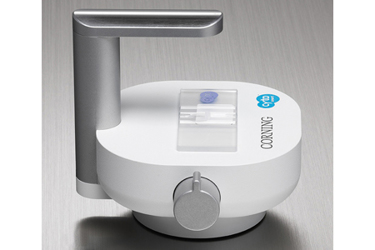Counting Murine CAR T Cells Using The Corning® Cell Counter
By Jeff Partridge, Corning Incorporated, Life Sciences

Chimeric Antigen Receptor, or CAR T cells, are genetically modified autologous T cells that are currently used for immunotherapy to treat certain cancers1-3. These T cells are modified to express CARs, which are proteins that allow T cells to recognize an antigen on targeted tumor cells4.
Early outcomes from CAR T-cell trials have generated impressive results in patients with refractory or relapsed leukemias and lymphomas1-2, and research is underway on using CAR T cells in solid tumors2,4.
Generating CAR T cells
Whole blood is collected from a patient (in this application note, mouse) and PBMC (peripheral blood mononuclear cells) are separated and saved while the remaining blood cells and components are returned to the body (leukapheresis). Next, T cells are enriched from the PBMC population using various methods (e.g., density gradient, size-based fractionation, antibody bead conjugates). The T cells are genetically modified with genes of interest, such that they now express CARs, allowing them to target and destroy tumor cells. CAR T cells are activated and expanded (ex vivo), and in production scale there are additional QA and transportation/delivery steps. Finally, CAR T cells are infused back to the patient3. This may be indirectly to the peripheral circulation or directly to the affected site depending on the tumor type5.
CAR T cells are often counted using time consuming manual methods such as a hemocytometer. While the hemocytometer has been considered the gold standard for cell counting since the 18th century6, results are frequently subjective, variable, and small differences in cell diameters cannot easily or reproducibly be discerned.
The Corning Cell Counter offers an alternative method to quickly and accurately count these cells. The counting algorithm was developed to identify and remove debris and account for dead cells, while the functionality of the application allows for the population to be gated to remove unmodified T cells from the final count.
Get unlimited access to:
Enter your credentials below to log in. Not yet a member of Cell & Gene? Subscribe today.
